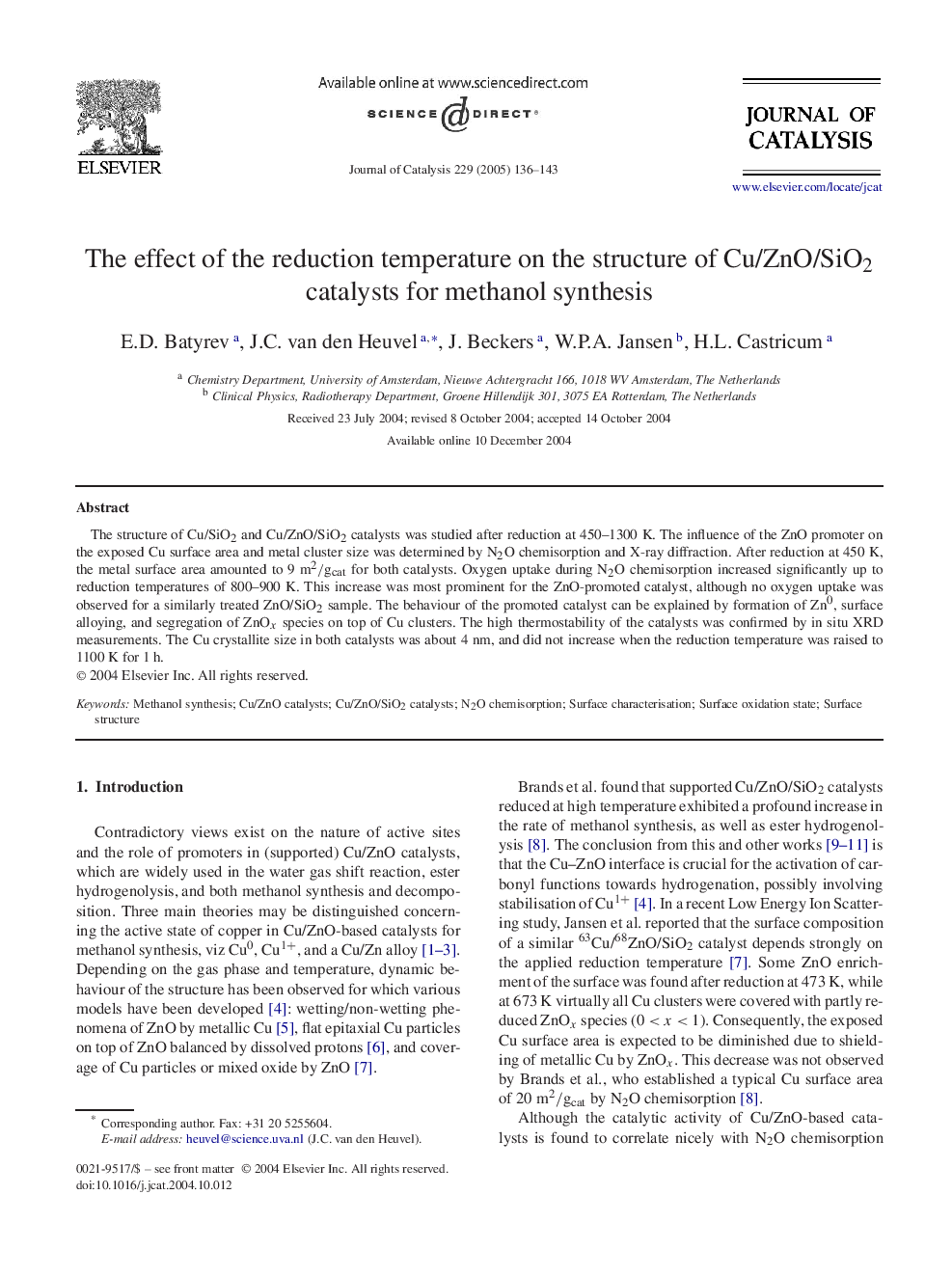| Article ID | Journal | Published Year | Pages | File Type |
|---|---|---|---|---|
| 10245116 | Journal of Catalysis | 2005 | 8 Pages |
Abstract
The structure of Cu/SiO2 and Cu/ZnO/SiO2 catalysts was studied after reduction at 450-1300 K. The influence of the ZnO promoter on the exposed Cu surface area and metal cluster size was determined by N2O chemisorption and X-ray diffraction. After reduction at 450 K, the metal surface area amounted to 9 m2/gcat for both catalysts. Oxygen uptake during N2O chemisorption increased significantly up to reduction temperatures of 800-900 K. This increase was most prominent for the ZnO-promoted catalyst, although no oxygen uptake was observed for a similarly treated ZnO/SiO2 sample. The behaviour of the promoted catalyst can be explained by formation of Zn0, surface alloying, and segregation of ZnOx species on top of Cu clusters. The high thermostability of the catalysts was confirmed by in situ XRD measurements. The Cu crystallite size in both catalysts was about 4 nm, and did not increase when the reduction temperature was raised to 1100 K for 1 h.
Keywords
Related Topics
Physical Sciences and Engineering
Chemical Engineering
Catalysis
Authors
E.D. Batyrev, J.C. van den Heuvel, J. Beckers, W.P.A. Jansen, H.L. Castricum,
